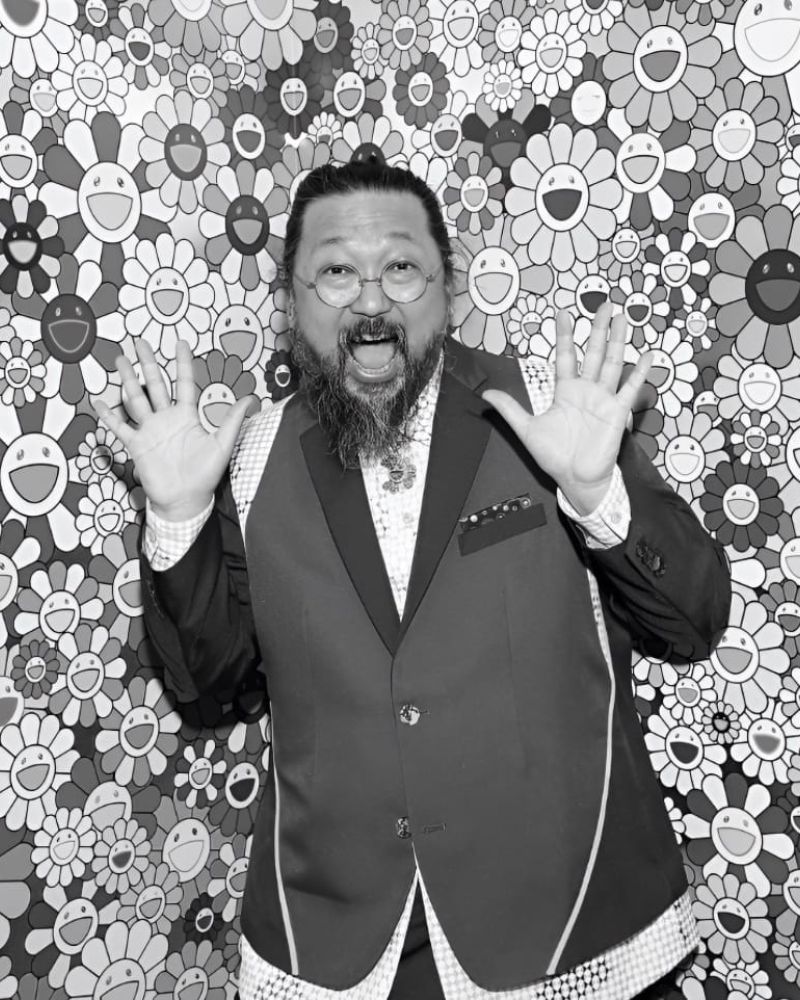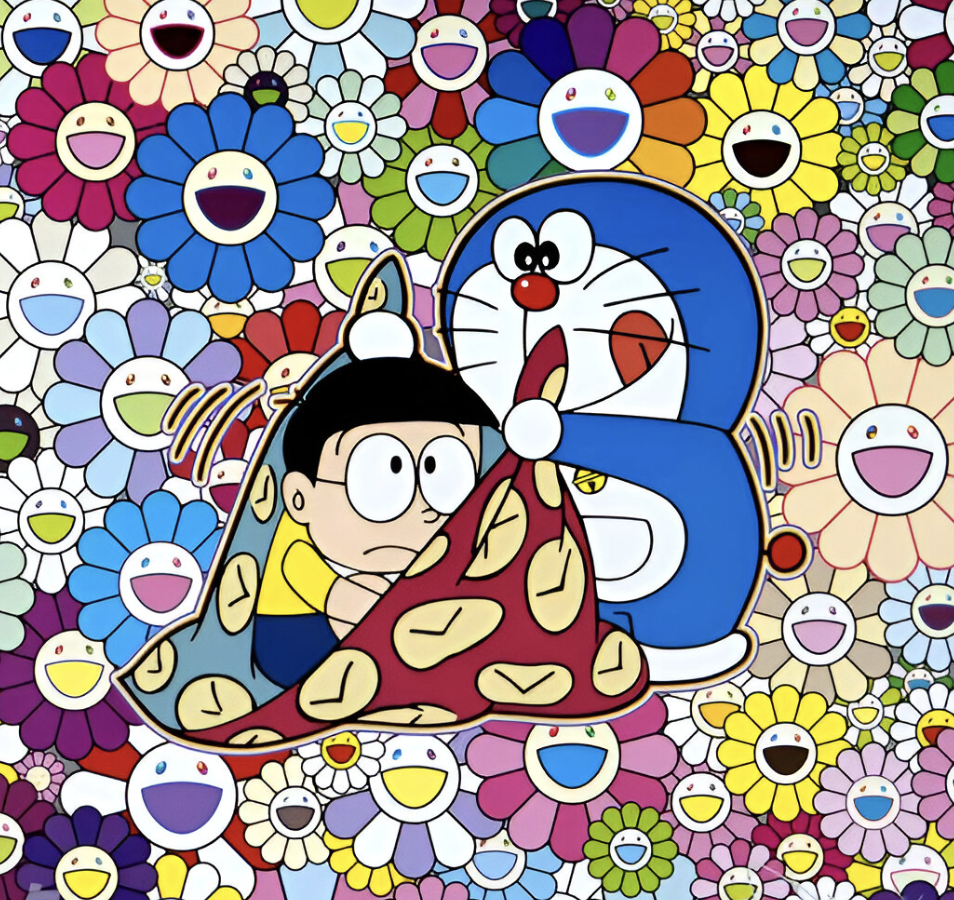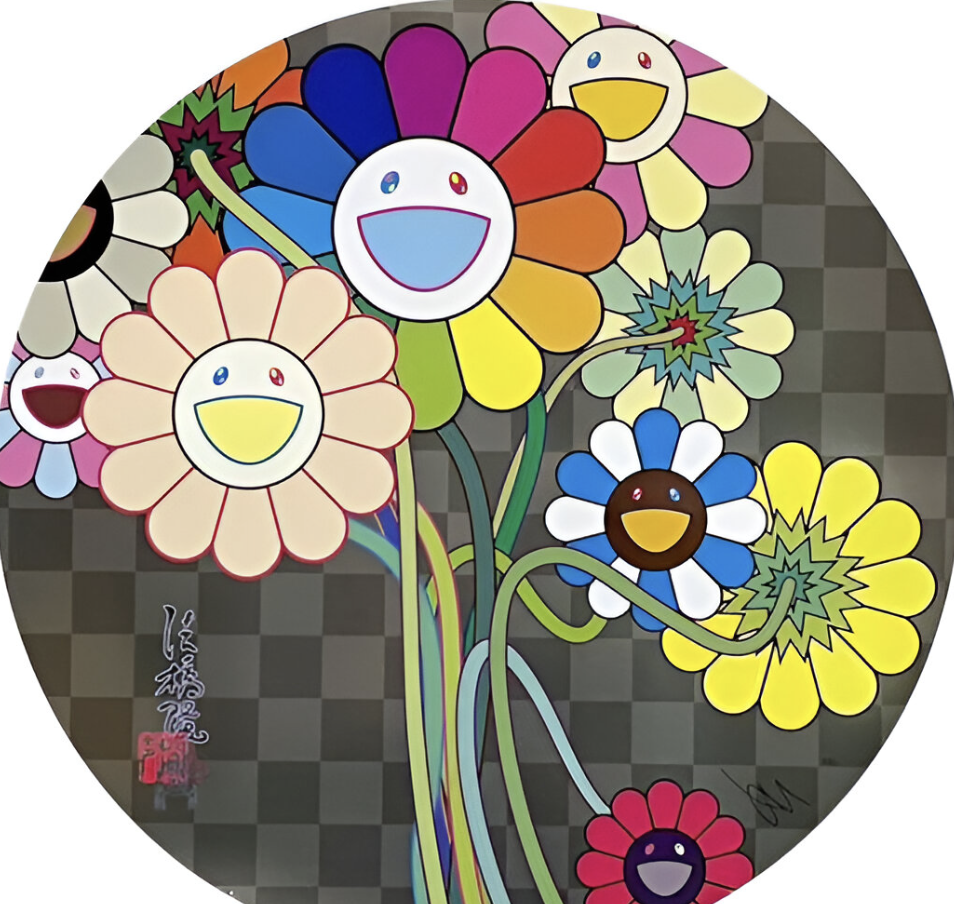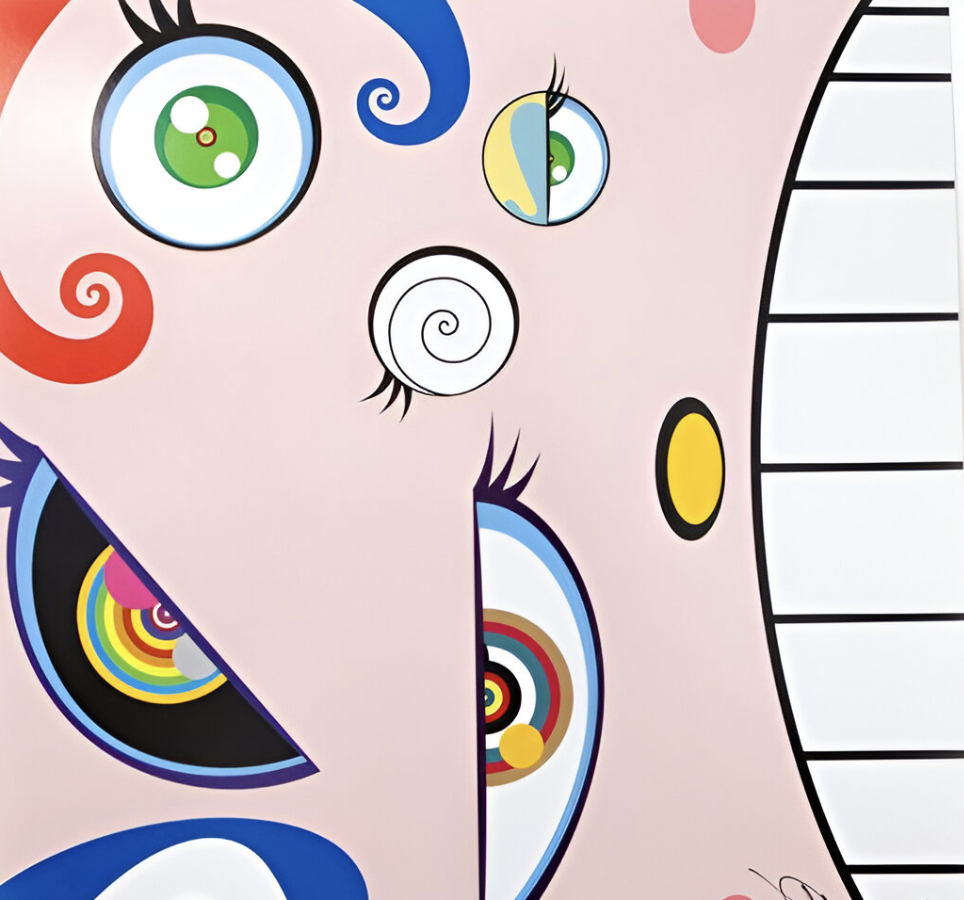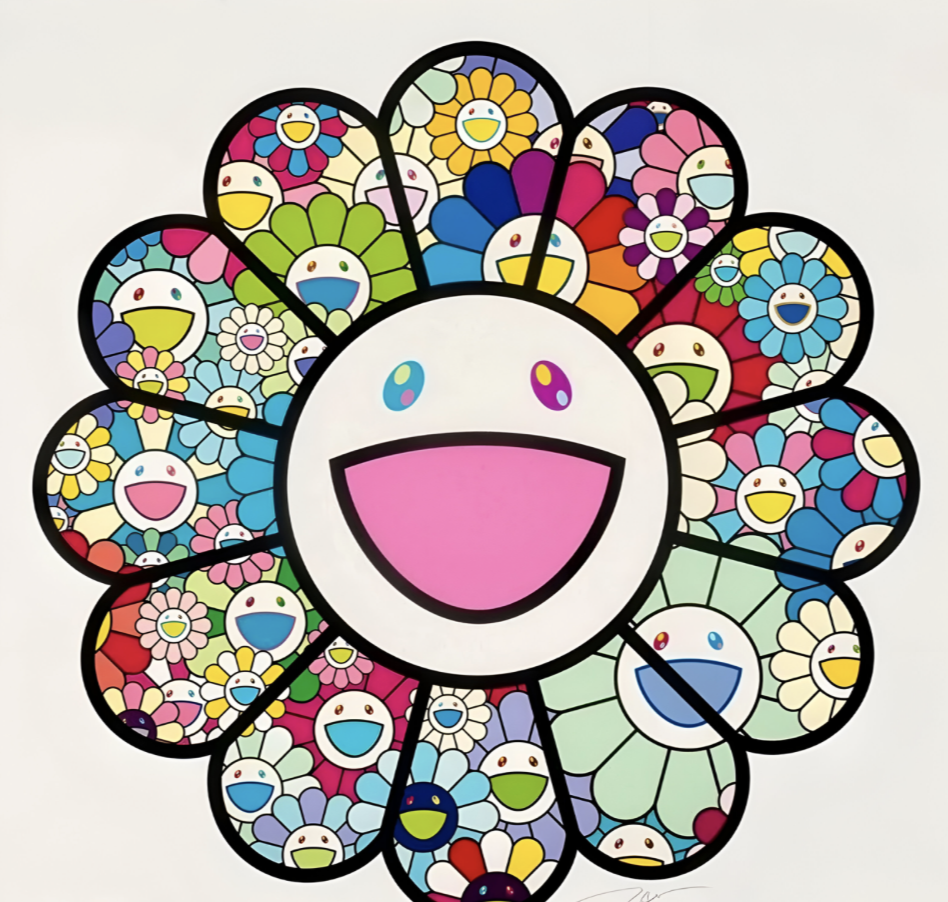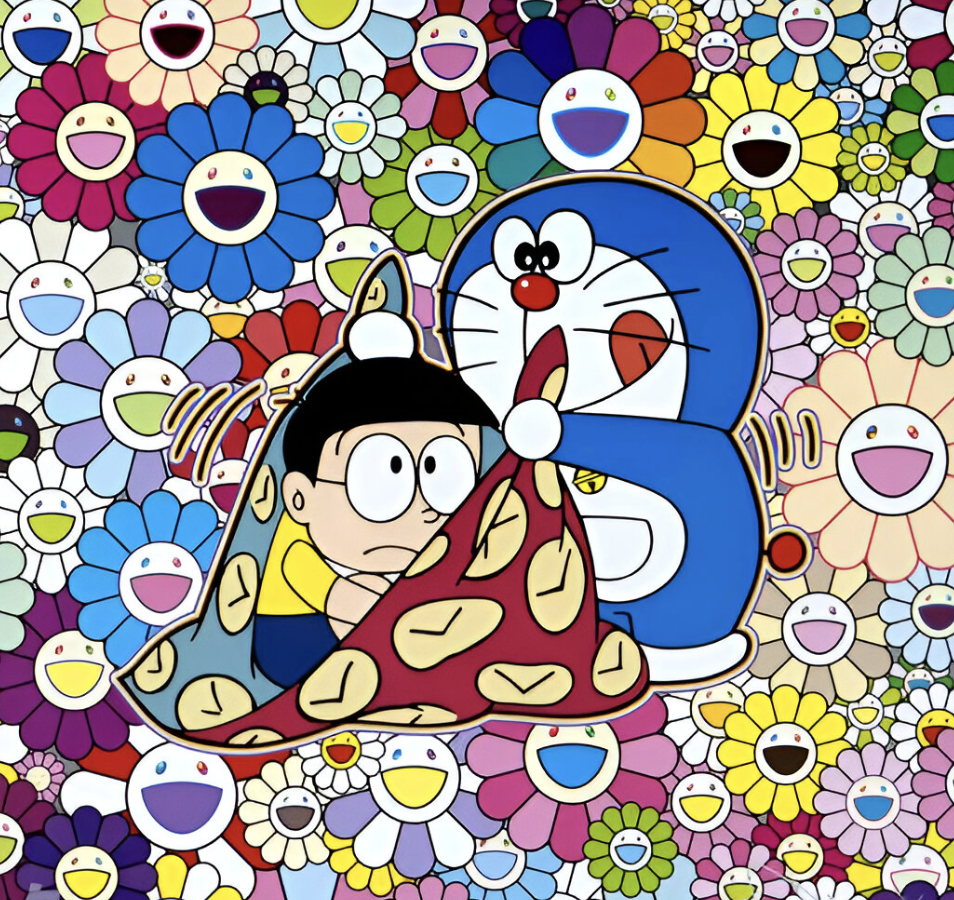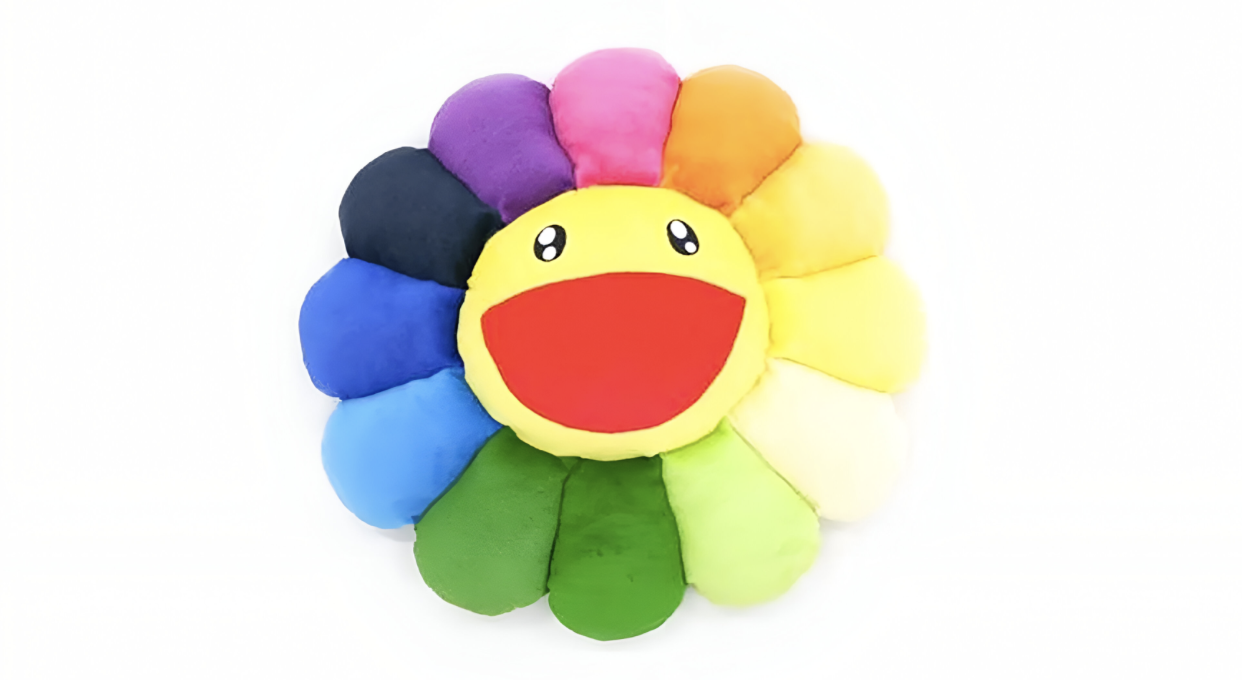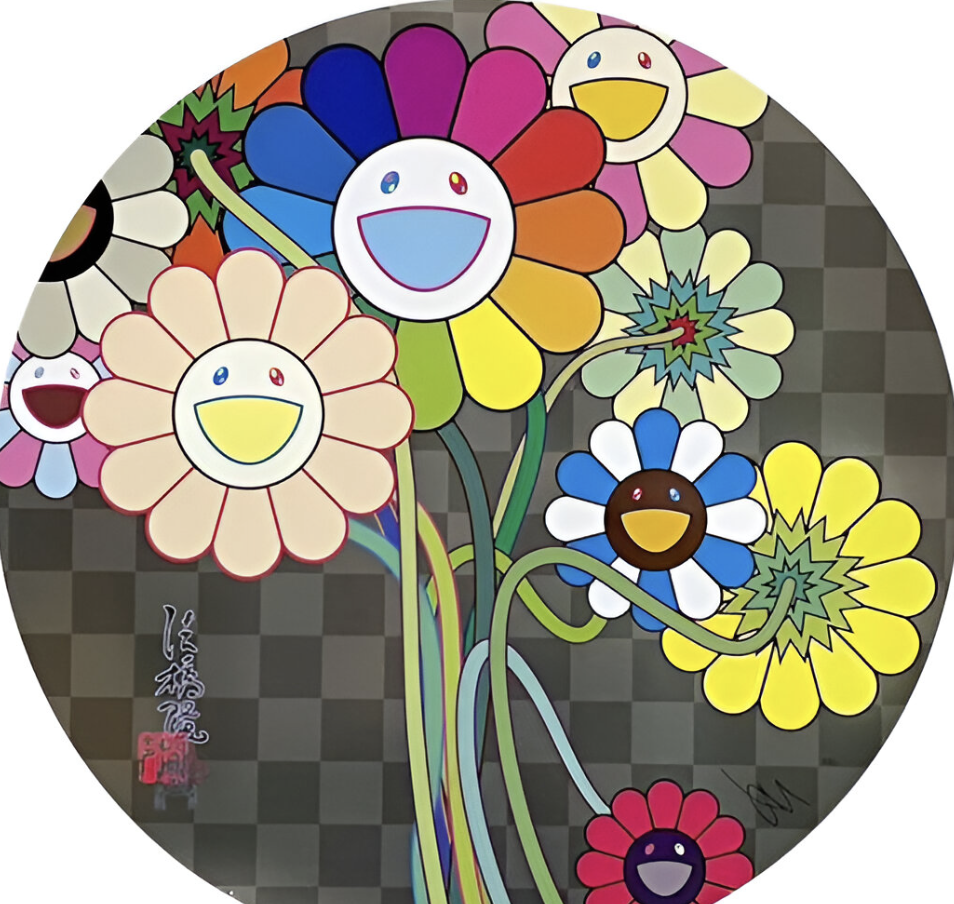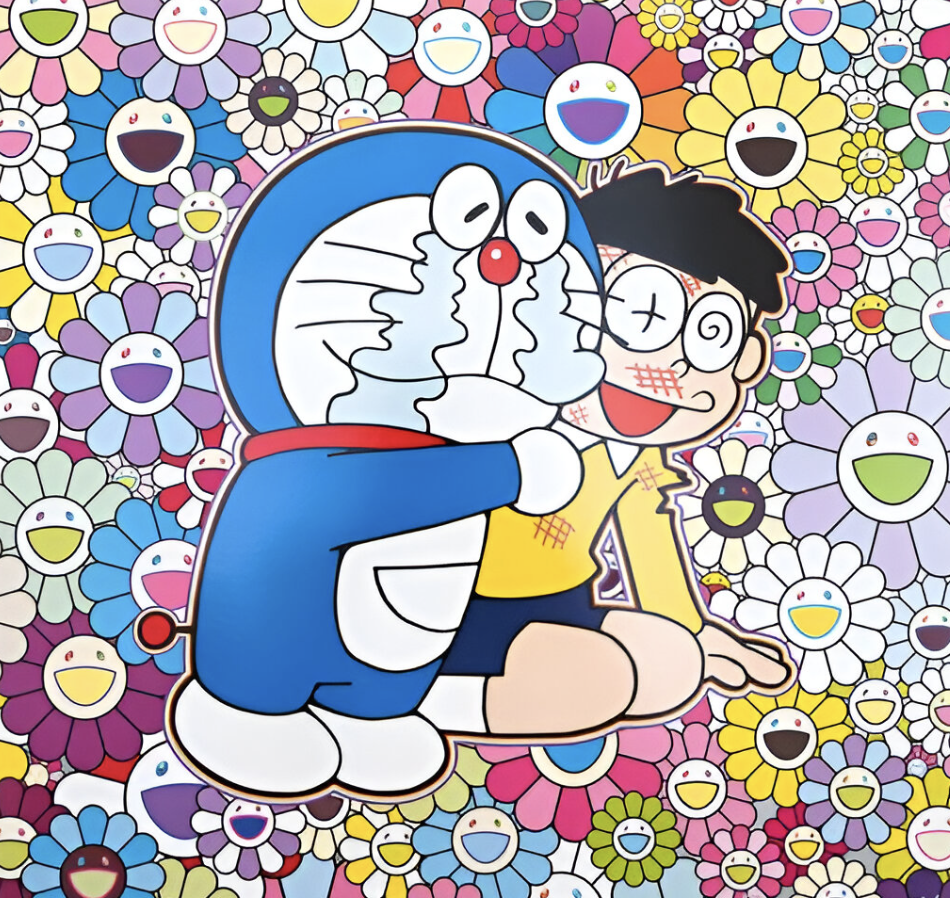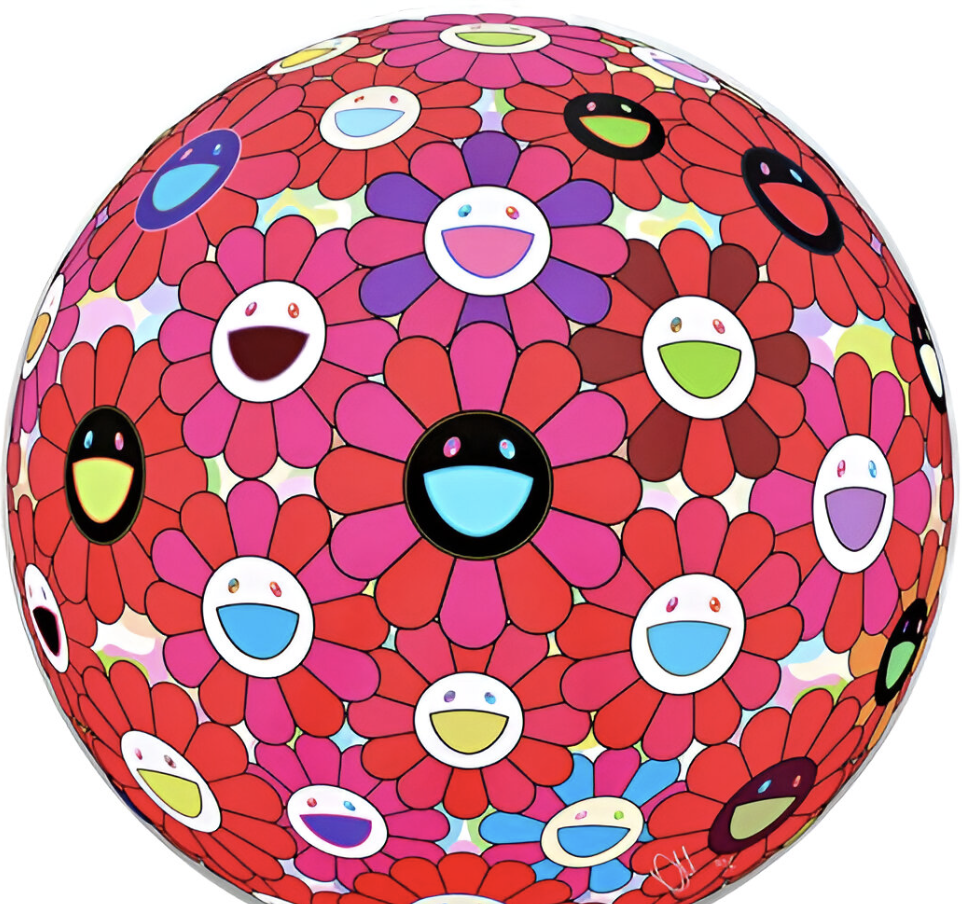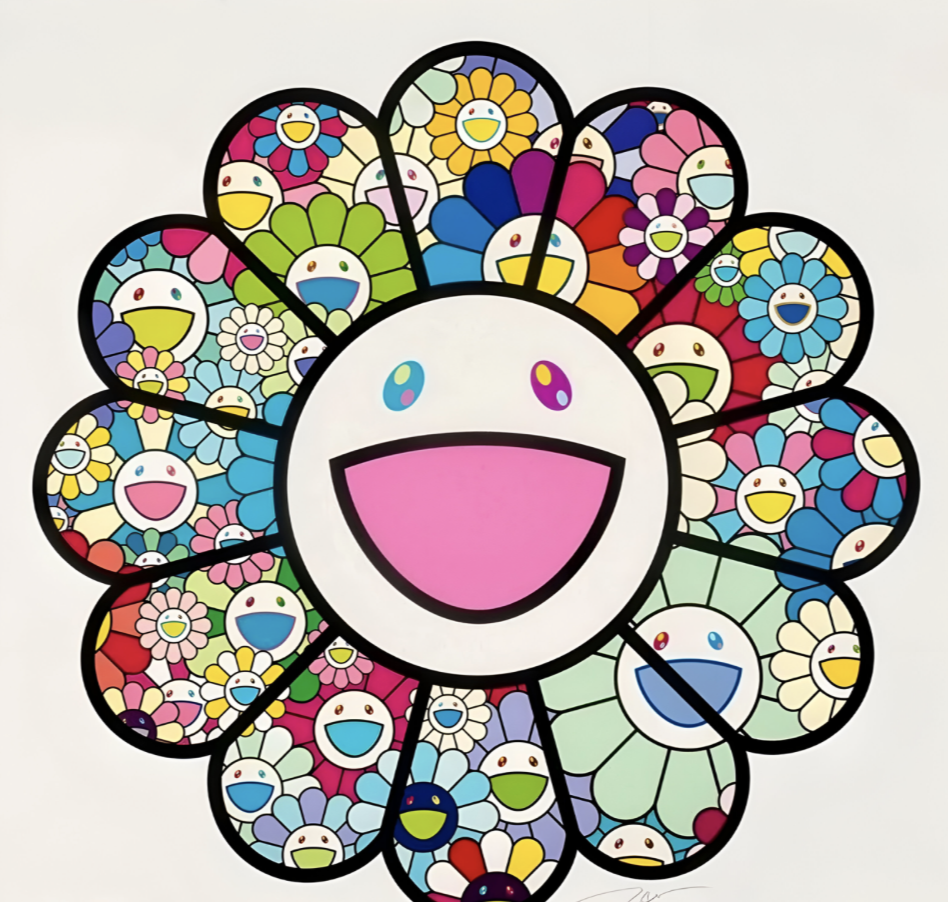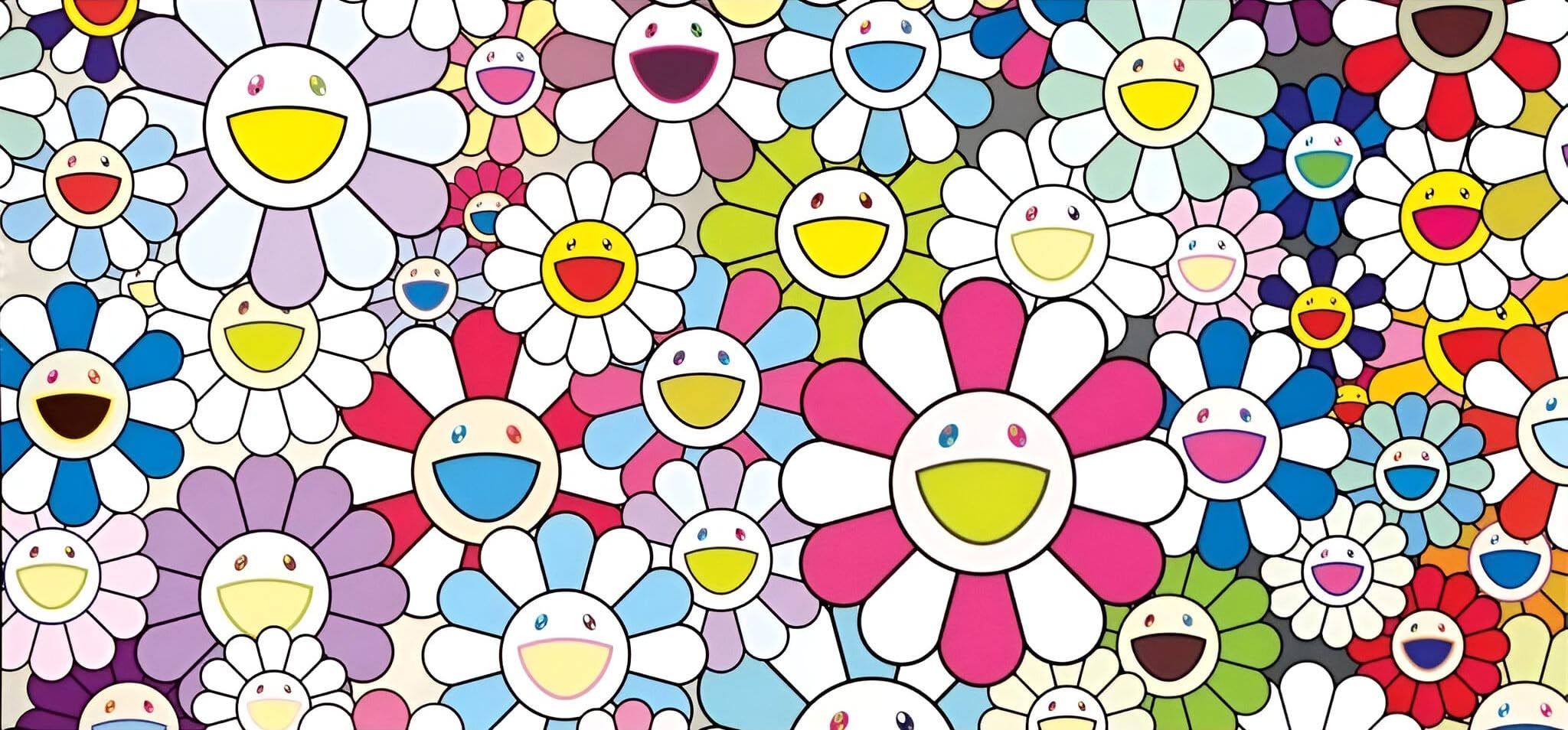Born in Tokyo, Takashi Murakami has always been passionate about Manga, so much that he wanted to become a designer.
He studied Japanese traditional painting at the University of Art in Tokyo.
Takashi Murakami makes his debut in the art world with his first solo exhibition in Tokyo in 1989. He then moved to New York, bringing there his Superflat style, which became a real movement of Japanese art.
This style is characterized by the integration of many elements such as Japanese culture, 70's anime and Japanese paintings, all merged into flattened images, smooth surfaces and bright colours. Murakami’s works of art become true monumental icons of Japanese society, making the artist one of the best representatives of contemporary Japan’s cultural originality.
Murakami has often been described as a pop artist and compared to Andy Warhol for being openly inspired by mass culture. In his works, in fact, references to the iconography of anime and manga are evident.
The artist produces his works in a factory, Kaikai Kiki, which is very reminiscent of The Factory of the king of pop art. The process of realization is based on techniques of reproduction in series through digital models, on which he draws sketches with the pencil, which are later inserted in a computer by experienced assistants of vector graphics.
Without denying his interest in the activities of Warhol and Jeff Koons, the artist has claimed his cultural autonomy, and stated that his aesthetic references are essentially related to Japanese pop culture and the otaku phenomenon.

